Crowdsourcing is not a new concept. Despite only being coined a term in 2006, it has been around for much longer.
In the first half of the 18th century, the British government organized what would nowadays be called a crowdsourcing contest to solve a sailing problem that they were stuck with. Its winner was a son of a carpenter who invented the first marine chronometer.
The British government hesitantly awarded him £20,000. Note that back then that was a much larger sum of money which would now equate to roughly $4 million.
Since then, crowdsourcing has become more popular for
RELATED: 5 Advantages of Crowdsourcing Design & Product Development
There are many benefits to it. Crowdsourcing drives creativity and innovation. It opens brands to a broader pool of ideas and specialists as well as requires fewer resources. And, because we have access to the internet, there is you no longer a need to limit yourself to a single geographic location.
The world can be your playground.
As a result, over 80% of global brands, including such giants as McDonald’s, Coca Cola, and Dell have used crowdsourcing over the past decades. From logos and graphic design to recipes and answers to common questions, crowdsourcing can be used for virtually any type and aspect of a business.
Product creation is no different, and numerous brands have turned to the crowds for new product design services. Let’s take a closer look at a few of them.
Lego
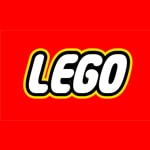
Ever looked at your kid’s Lego set and wished that there was a Pirates of the Intergalactic Caribbean set that you could get your hands on? It’s not impossible for that or any other idea to become a reality.
Lego has established its own platform where customers can submit their product designs. Then, other Lego customers can vote for their favorite product ideas, explain why they like them, and say how much they’d be willing to pay for them.
Designs with the most likes get reviewed by Lego’s official committee.
This approach allows Lego to not only get free designs of unique
Boeing
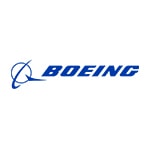
In the past, Boeing’s standard approach was creating its designs and sending them off to suppliers. Then, the suppliers would ship completed parts to Boeing where its workers would put them together.
However, in the creation of 787 Dreamliner, Boeing took a different route. It had lost its leading position in aerospace to Airbus, its European competitor. Airlines were looking for cheaper, more fuel-efficient planes, and Boeing had to innovate. It had limited funds to do that and a deadline to meet.
So, instead of doing everything themselves, the company invited its global suppliers to collaborate on everything – product design, engineering, as well as manufacturing.
The process wasn’t easy, and it was most definitely risky. It may not have worked for everyone. However, Boeing’s suppliers are Kawasaki, Mitsubishi, and General Electric, to name a few. The company invited engineers from 100 different companies to collaborate.
The 787 Dreamliner was a product of a series of innovations that Boeing wouldn’t have been able to achieve on its own. These included an entirely new type of lightweight wing and a new, faster, more efficient maintenance system. It also shortened the design process by a year, and the assembly process was down to only three days.
Reflecting on this experience, Boeing admits that they would never go back to their old ways.
Unilever
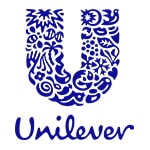
You may have never heard the name of this company, but you likely have their products in your home. Dove, Knorr, Hellmann’s, and Lipton are some of the brands under this company.
Unilever supports sustainability and runs the Unilever Sustainable Living Plan, an initiative to make sustainable living more accessible worldwide – especially in the less developed parts of the world.
They frequently run crowdsourcing contests to find innovative solutions to common amenities. One of them was a recycling shower project. The winning project was a waterfall-inspired shower design that was awarded €5,000.
An additional €5.000 was distributed among the four runner ups. In addition to that, Unilever continuously accepts new product design ideas through its website.
Samsung
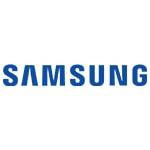
There was a time when the smaller your mobile phone display was, the better. Not anymore. Nowadays, screens matter and they need to be big. Samsung knew that quite a while back.
In 2013, Samsung ran a crowdsourcing campaign for the best flexible display ideas. They had lots of rigorous rules and guidelines to follow. The display had to (obviously) be the key part of the phone, and it had to be cost-efficient.
The company invited designers, entrepreneurs, and engineers to submit their designs and the winner could take home $10,000.
Samsung is set to launch its first fordable display phone in 2019. So, we’re about to witness how crowdsourcing efforts inspired its design.
Porsche
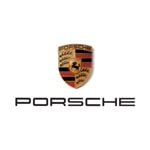
Porsche took a slightly different approach to crowdsourcing. To celebrate reaching five million fans on their Facebook page, the German car manufacturer allowed its fans to customize the design of a car. They called it 911 Carrera 4S.
Porsche asked its fans to choose different aspects of the car design ranging from its exterior and interior color to door, wheel, and bumper design. The most popular choices were then added to the final design of the vehicle.
At the end of this project, over 50,000 people had voiced their preferences. Porsche designed the car and added a stripe to its sides that read “5M Porsche Fans.” The company uploaded the images of this sports car onto their Facebook page.
The final prize of this crowdsourcing contest was a free ride in this unique car. The person with the highest number of Porsche Facebook page fans among their friends got the opportunity to test the car at the Porsche Experience Center in the UK.
While Porsche may not have gotten a flood of new car designs, it most definitely increased its mindshare and established a closer connection with the brand’s fans.
Catalyst Activewear
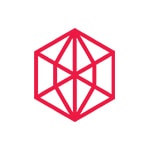
Catalyst Activewear is a UK-based yoga apparel brand that utilized a similar approach. In early 2017, the company launched a platform called Open Studio.
This Tinder-like online platform allows users to view 3D designs of new products before the company launches a new collection. Then, they can use the platform to vote for their favorite colors, designs, patterns, and styles
While fans and customers do not design the products, they most definitely dictate which designs go into production.
Such an approach is a way of innovating the clothing industry and the way people shop. Lots of unsold and unused clothes end up in landfills.
On a smaller scale, this approach to crowdsourcing allows small businesses to maximize their resources. By knowing what their customers would like to buy ahead of time, brands can identify what items will sell and which won’t.
As a result, it allows brands like Catalyst Activewear to increase their profits and reduce stock overhang.
NASA
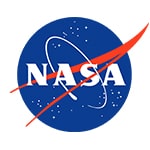
When it comes to crowdsourcing contests, NASA does it right. It regularly hosts challenges for a variety of projects which basically are crowdsourcing competitions.
These competitions usually have several stages and last for several years. They also accept contestants from all over the globe.
One of the contests involved designing a 3D-printed habitat for sustainable shelters that can be used on Mars. Contestants are responsible for a variety of tasks from developing software with which to design these shelters to constricting actual physical structures.
Other projects have included designing a sustainable waste disposal system to be used in space and technology to mine water on Mars.
Their prizes for winning NASA crowdsourcing contests are high, reaching millions for winning the final phases. However, it’s NASA after all.
While the use of these developments may be somewhat far-fetched, it gives NASA access to a wealth of fresh and creative ideas.
DARPA
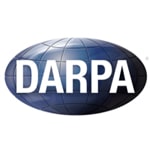
NASA isn’t the only government agency crowdsourcing its projects. So does DARPA, the Defense Advanced Research Projects Agency. Yes, you read that right.
A government agency successfully crowdsourced a security project and paid $1 million for the winning design.
A three-person team of engineers designed an amphibious combat vehicle for the Marines. Their innovational design beat 200 other teams consisting of approximately 1000 other contestants.
While this was DARPA’s first crowdsourcing project, it wasn’t going to be its last. It expressed interest in giving away $1 million for the hull design and another $2 million for the complete vehicle.
Starbucks
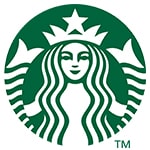
Starbucks is another brand that hosts a dedicated crowdsourcing platform that accepts user suggestions. The brand has accepted many of the customer ideas that range from new products to in-house experiences and ways of building the Starbucks community.
If you are a fan of Skinny Mocha, Cake Pops, sugar-free syrups, or K-Cups, you’ve got crowds to thank for all of those. Love the idea of free Wi-Fi at their coffee shops? That too wouldn’t have happened without the crowds.
However, one of its most notable crowdsourcing projects was the White Cup Contest in 2014.
Misspelled customer names weren’t the only thing that went on the standard Starbucks’ white cups. Baristas had noticed that customers tended to doodle on them. So, the brand decided to put this tend to good use by launching a contest.
Rainbow-colored unicorn, flowers, dinosaurs, or geometric shapes, customers could doodle anything. The sky was their limit and the coffee cups their canvas. All they needed to do was submit their designs to social media and add the hashtag #WhiteCupContest.
Almost 4,000 designs later, Starbucks determined a winner – an art student from Pittsburg. Her design was used to create a limited-edition reusable cup. Customers got a 10-cent discount each time they purchased a drink with it. So, ten coffees later the cup paid off!
As a result of this contest, Starbucks didn’t just get a new reusable cup design. The brand also got free promotion across a variety of social networks and brought its community closer.
Local Motors
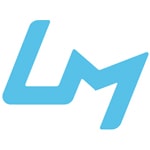
Local Motors is another brand that is no stranger to crowdsourcing. One of its latest initiatives is teaming up with IBM to develop the Accessible Olli, a self-driving urban shuttle.
Local Motors crowdsourced the design and creation of the vehicle. A 24-year old Colombian native created the winning design. Then, approximately 100 partner companies made it happen.
Olli’s parts are 3D-printed, and it needs only two weeks to get assembled.
Now, through crowdsourcing, the brand is looking for ideas to make it more accessible to people with disabilities or those with impaired mobility. The ultimate goal is making Olli the most accessible means of transportation in the world.
Using a platform that resembles a discussion forum, users can submit their ideas of what should be improved about Olli. They can also discuss their ideas with other users. The platform also offers all the necessary documents for download as well as a feed with updates on the vehicle from the site.
Asus
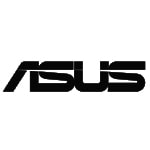
Dream gaming computer? No problem! Asus found a way to have that handled with the help of crowdsourcing.
It organized a contest during which it invited twelve world-class modders, specialists in modifying computer hardware and/or software, to develop twelve Dream Gaming Machines.
Asus specified which of its gaming desktops and laptops it wanted the modders to use. To give this contest a “gaming” feel, it allowed them only 30 hours to do so.
Then, Asus handed over the reins to its fans and customers allowing them to vote for their favorite design. By doing so, they could win a powerful gaming computer.
To encourage its customers to keep casting votes, Asus organized additional giveaways after every 10,000 votes.
Olive Union
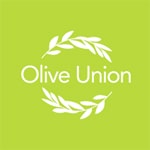
This Korean company may not be a massive global brand (or at least not yet), but it did achieve impressive success with its crowdfunding and crowdsourcing efforts.
Olive developed next-generation affordable hearing aid that it wanted to make accessible to anyone needing one. It launched an IndieGoGo crowdfunding campaign to collect the necessary funds.
The campaign collected six times the funds initially needed. It allowed the brand to develop the beta version of its product and send it to its backers.
Then, the users of the beta version expressed their opinions and suggestions on what they wanted to be improved and how. As a result, it allowed the company to make the updates and upgrades necessary.
They were able to save resources in research in the process and optimize the product for its eventual launch.
Time and time again, different brands have proven that crowdsourcing product design and other aspects of their business. You may not have the budget of NASA or the popularity of Starbucks. Yet, you can have the wisdom of crowds at your disposition when it comes to making your product ideas a reality.
At Cad Crowd, we have access to over 21,000 global design talents. Submit your idea to us and have one of them create anything from the winning concept and product design to unique packaging design for you. Check out how it works.
